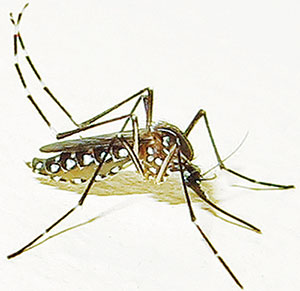Editor’s Note: The original, longer version of this article appears on EntomologyToday.org.

Photos: Dr. Gerry Wegner
On March 13, nearly 70 scientists, public health officials and other participants attended the Summit on the Aedes aegypti Crisis in the Americas, a one-day meeting convened by the Entomological Society of America (ESA) and the Sociedade Entomológica do Brasil (SEB) in the city of Maceió in Alagoas, Brazil.
Although the Summit took place during the Zika crisis, the planning for it began two years ago. The Aedes aegypti mosquito was a problem long before anyone had even heard of Zika because it also transmits dengue, chikungunya, and yellow fever.
The idea behind the Summit was to explore ways for the international community of entomologists to better control mosquito-borne diseases in the Americas and around the world. To do this, they need to determine where more research is needed, discuss technologies and approaches that can currently be used for effective mosquito control, and communicate with consumers. Without the public’s help, the Aedes aegypti mosquito will not be controlled effectively.
The reason is that Aedes aegypti are container breeders that tend to live near humans. Females lay eggs in small amounts of water (cans, bottles, old tires, rain gutters, etc.) that can be found nearly everywhere in countries like Brazil where it tends to rain a lot. Furthermore, they prefer to feed on humans more than other mammals, and they will bite multiple times during the day and the night, making them more likely to transmit viruses.

Richard Levine
Photo: Matthew Chism
The University of Kentucky’s Dr. Grayson Brown, an ESA past president and one of the co-organizers of the Summit, told me that a public education campaign is needed, one that would make people understand that it is not OK to leave standing water in their yards — just as they have learned that it is not OK to drive while drunk or to smoke cigarettes in restaurants.
During the Summit, examples of similar efforts were given, including public education campaigns during the 2014 Ebola crisis in Africa. The scientists also discussed novel ways of controlling mosquitoes that do not involve traditional pesticide applications, although pesticides can still be used in integrated vector management programs. The tools and methods included using bacteria to disrupt mating, an acoustic larvicide, a mechanical insecticide, a laser monitoring device, and even genetically modified mosquitoes, among others.
In addition to presentations about the mosquitoes and ways of controlling them, attendees broke into groups to discuss what needs to be done in the future. Funding for mosquito control was a subject that was brought up often. Unfortunately, most of the resources for mosquito-borne disease prevention seem to go toward medical solutions, like vaccines, medicine, or detection methods.
It’s worth noting that Aedes aegypti was eradicated in Brazil — or at the very least, nearly eradicated —in the late 1950s after programs were implemented by the Pan American Health Organization (PAHO) and the World Health Organization (WHO). Hopefully, this meeting will lead to similar collaborative and successful efforts.
Levine is the ESA’s public affairs officer, editor of its online news site, Entomology Today, and co-author of “IPM for the Urban Professional: A Study Guide for the Associate Certified Entomologist.” Contact him at rlevine@entsoc.org.
PMP 2016 Mosquito Management Survey
Leave A Comment